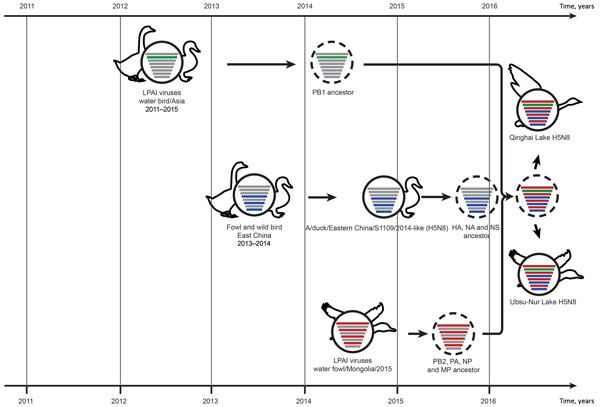Volume 23, Number 4—April 2017
Dispatch
Highly Pathogenic Avian Influenza A(H5N8) Virus in Wild Migratory Birds, Qinghai Lake, China
Figure 2

Figure 2. Hypothetical evolutionary pathway of influenza (H5N8) viruses from Qinghai Lake, China. Gene segments are colored according to their origins. Dashed virions indicate unidentified viruses. HA, hemagglutinin; LPAI, low pathogenicity avian influenza; MP, matrix protein; NA, neuraminidase; NP, nucleoprotein; NS, nonstructural protein; PA, acidic polymerase; PB, polymerase basic.
1These authors contributed equally to this article.
Page created: March 17, 2017
Page updated: March 17, 2017
Page reviewed: March 17, 2017
The conclusions, findings, and opinions expressed by authors contributing to this journal do not necessarily reflect the official position of the U.S. Department of Health and Human Services, the Public Health Service, the Centers for Disease Control and Prevention, or the authors' affiliated institutions. Use of trade names is for identification only and does not imply endorsement by any of the groups named above.